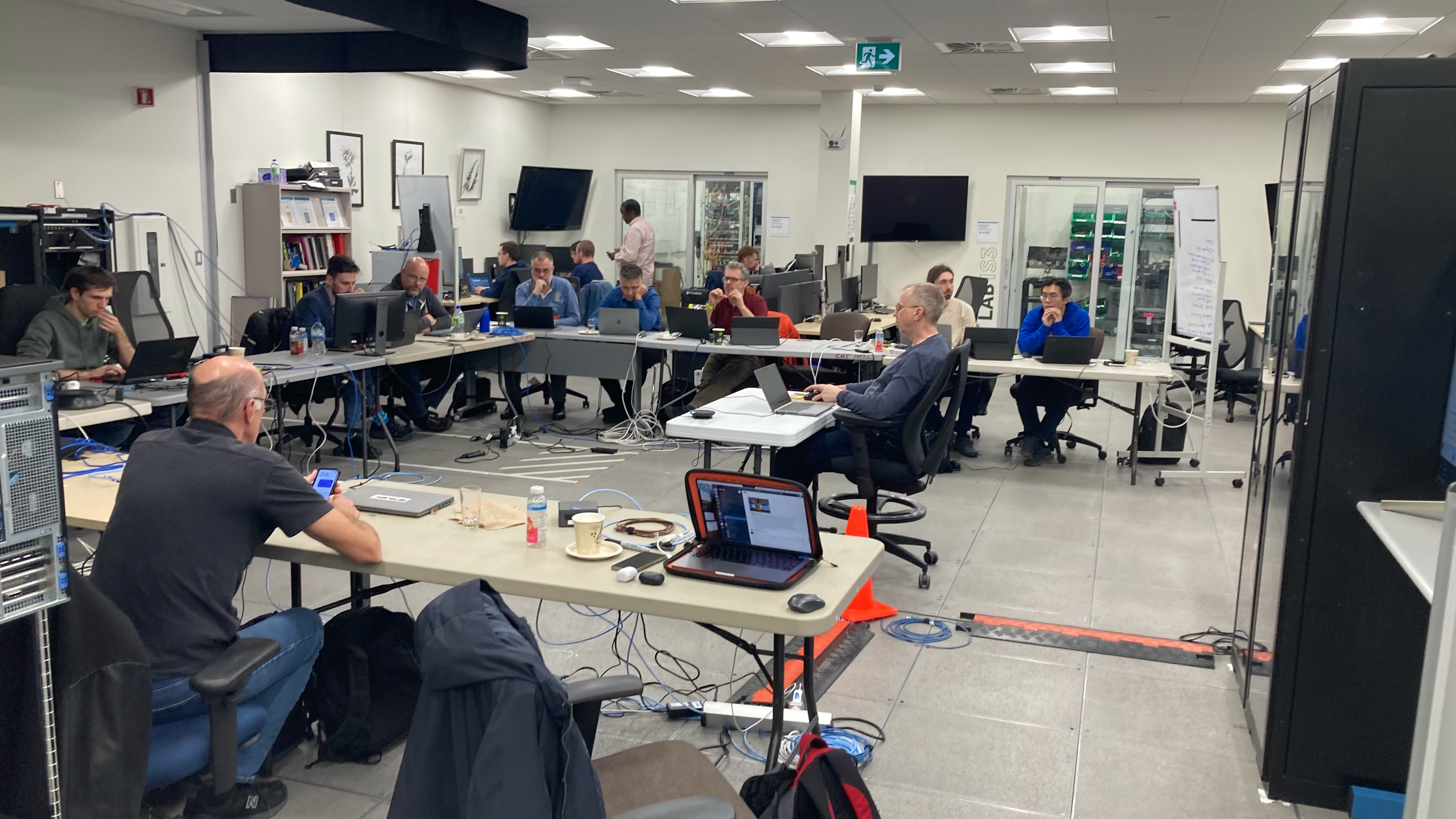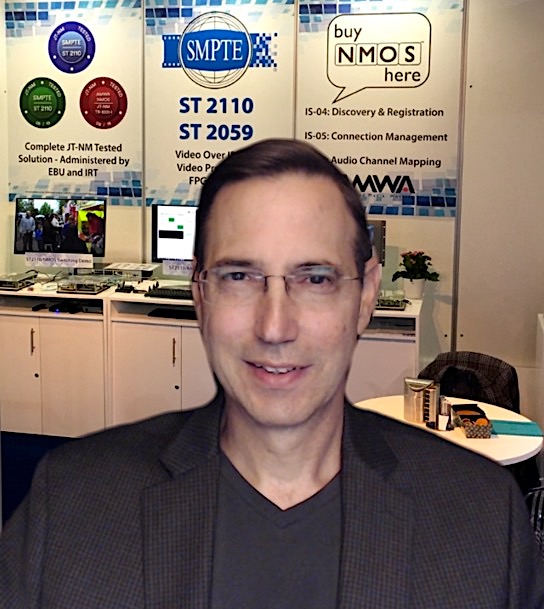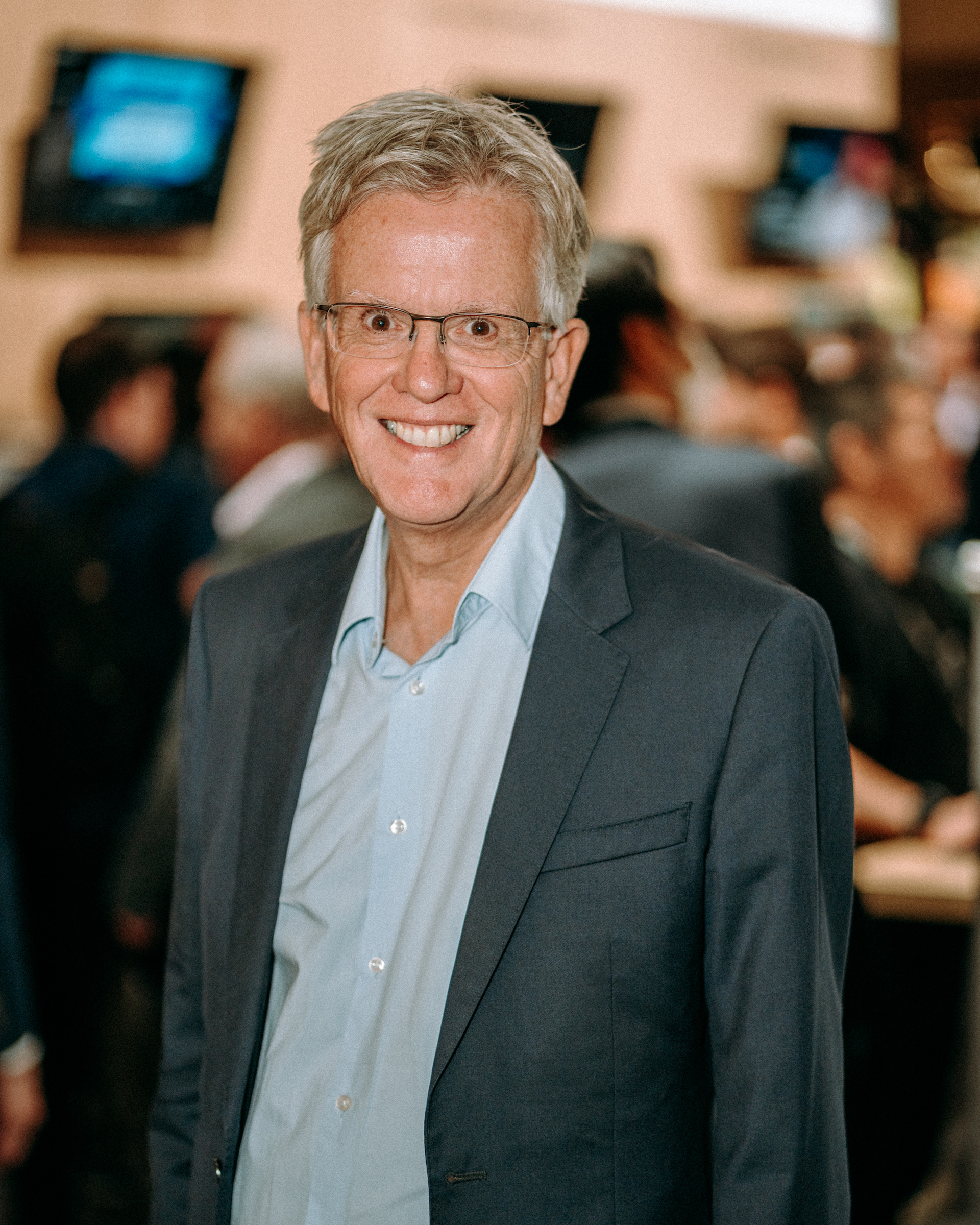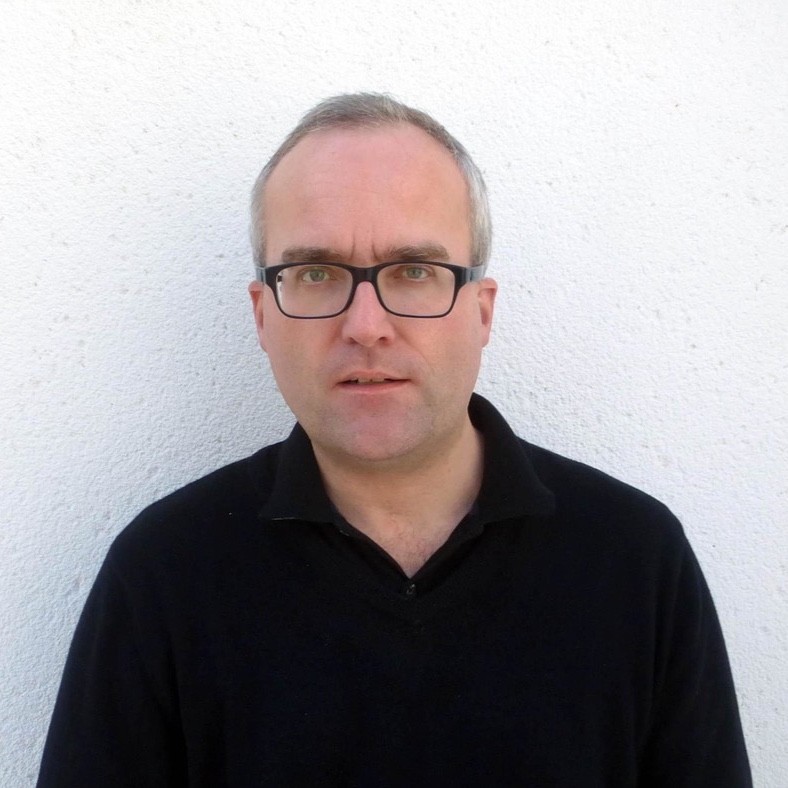Brainstorming NMOS: Collaborating for the Common Good
Despite sometimes being in competition for the same customers, leading media suppliers and broadcast organizations have recognized the value in coming together to evolve the Networked Media Open Specifications

Collaboration hasn’t always been a familiar currency in broadcast and pro-AV technology. The inherent competitiveness of such a forward-looking business has frequently meant that vendors and service providers have felt obliged to seek commercial advantage over common ground. But the challenges of moving successfully into the networked media era were so substantial that it’s arguable a sea-change was always destined to occur.
In fact, there are abundant examples of effective collaboration from the last decade or so as IP-based infrastructures have become more prevalent. An important contributory factor here is that broadcast and pro-AV have gradually converged, with an increasing crossover between the technologies and solutions being employed.
But there are also plenty of industry-changing developments that would not have been possible without meaningful partnership. The AES67 audio interoperability standard and SMPTE ST 2110 media transport standards suite are two prominent examples, and the same applies to AMWA (Advanced Media Workflow Association) and its Networked Media Open Specifications (NMOS).
An initiative that both synthesises existing specifications and standards, and expands upon them with extra features and functionality, NMOS draws on work from other well-established technology organisations, namely: the aforementioned SMPTE (Society of Motion Picture and Television Engineers), EBU (European Broadcasting Union), AES (Audio Engineering Society) and VSF (Video Services Forum).
In this article we’ll speak to a leading broadcaster and two prominent vendors to find out why they opted to collaborate so openly and contribute their thoughts and ideas to a set of specifications with the potential to benefit not just them, but the industry as a whole.
‘Building a Community’
Like all of the organizations featured here, the BBC has been involved in the development of NMOS since the project’s early days. Peter Brightwell is Lead Engineer at BBC Research and Development, heading up the corporation’s applied research on infrastructure for live video, as well as being a frequent contributor to industry work on interoperability and the transition to hybrid and cloud-based production. He has very good reason to recall the date of the first workshop of the AMWA Networked Media Incubator that went on to inform so many of the developments subsequently encompassed by NMOS.

“It was on Jan. 11 2016, the day after David Bowie died,” he says, although fortunately this sad event did not prove to be portentous for the incubator’s prospects. “In many ways, it was still early days for IP networked media—this was prior to the publication of ST 2110—although within BBC R&D we had already done quite a lot of work, including a show demo at the Commonwealth Games in 2014.”
The professional video industry's #1 source for news, trends and product and tech information. Sign up below.
Nonetheless, it was clear that a collegiate approach to something as monumental as the transition from SDI to IP was always going to be on the cards. Moreover, as time has gone by and the structures underpinning the various working and review groups have solidified, it’s a process that has become increasingly invaluable. "As much as anything else, it's about building a community and getting that cross-fertilisation of ideas. Having different groups coming together, sharing ideas, and realising that the way one group has done something could be useful over here, and so on,” suggests Brightwell.
Presently, there is what Brightwell terms a “two-phase approach” to specification activity. Phase one involves a “fairly light-touch, informal approach to get ideas about what we might want to do next. Using the incubator structure, we schedule informal calls for people who want to work together on a particular problem. They can then discuss the issue and ultimately put together a proposal for an actual specification activity. Once that is in place it can move into the second phase, which is formal agile specification activity incorporating more formal oversight.” As might be expected, regular calls between participants are deemed essential to maintaining progress in both phases.
Whilst a great deal of work is done remotely, physical workshops provide a welcome opportunity to brainstorm in person and strengthen relationships, and Brightwell estimates there have been a dozen of them—in locations as various as London, Montreal and Wuppertal—over the past eight years.
These gatherings can be especially useful in fine-tuning the agenda for a new specification “to focus on the areas that will be most beneficial to the people who are actively engaged. It also provides a space not just for discussion, but for people to demonstrate new ideas and features, so it’s really important on several levels.”
‘A Very Effective Mechanism’
The agility of the NMOS specification structure is also a recurring motif for Jed Deame, who is the founder and CEO of Nextera Video, a leading supplier of IP cores for video-over-IP.

“We’re a leading provider of NMOS software, and we’ve been doing this for seven or eight years—from before the stage where any of the specs had been ratified,” he explains, adding that the company also provides a full OEM solution for adding ST 2110 to new or existing products. “Our mission in life is essentially to help manufacturers add 2110 and NMOS to their products quickly and easily, enabling them to accelerate development and time to market of their own solutions.”
It was in the late 2010s that Deame first began to take an interest in the NMOS project, having encountered difficulties in moving video packets between 2110 devices.
“The amount of typing you had to do—answering questions like ‘what’s your port?’ and ‘what’s your video format?’—was immense, which also meant the level of frustration was pretty significant,” he recalls. “But then somebody said that once we have NMOS, all of this typing will go away and it’s going to be a ‘one-button-click’ operation. And that’s really the beauty of NMOS: it brings the simplicity and familiarity of cross-point routing to the IP world, whilst also taking it a step further with the addition of the NMOS registry, which provides plug and play discovery of all devices on the network.”
But it was once he started to attend NMOS ‘interop sessions’ and gain an awareness of the streamlined documentation and publication processes that the full value of the project became apparent.
That’s really the beauty of NMOS: it brings the simplicity and familiarity of cross-point routing to the IP world."
Jed Deame, Nextera Video
“It was all structured intentionally so there was a very agile mechanism for developing the specs,” observes Deame. “Each part was published to the web as soon as it had been discussed and received some initial approval. It wasn’t the longer, six-month-type cycle where you send everything out and wait for feedback from the industry.”
By contrast, the NMOS approach made "for a very iterative process. For example, with IS-04, which is the Discovery and Registration Specification, we were able to get a reference code to multiple vendors, have them review it, and then very quickly and efficiently put a basic set of specifications in place.”
Deame is sure this phased approach also makes it easier for manufacturers to feel more positive about implementation: “When we eventually publish the final versions, as opposed to the drafts, it isn’t a case of ‘good luck, this should now work.’ Instead, it is more like ‘this has been fully interop tested by multiple vendors and is good to go.’ So that created a lot of confidence for manufacturers to adopt NMOS and build products against the specs because they knew they had already been thoroughly tested.”
Meanwhile, the Nextera commercial NMOS solution continues to evolve; currently, the company’s R&D team is working to add IS-11, which ensures Stream Compatibility Management by reporting supported AV formats to the controller, and IS-13, which facilitates easy identification of nodes and devices through Annotation & Labelling.
Explaining the benefit of the Nextera solution over open-source code, Deame notes: “While it may be appealing to have a ‘free’ solution, it does require manufacturers to dedicate significant engineering resources to fully understand the code so they can integrate it with their products and maintain and evolve it without being dependent on the open-source developers outside of their control. The Nextera solution is turn-key, particularly when pre-integrated with our ST 2110 and/or IPMX FPGA IP Cores. There is no code to integrate; it works out of the box. We also provide direct, prioritised 24/7 support in case issues arise in development or in the field to ensure customer satisfaction.”
All of which serves to reconfirm Deame’s assertion that his company’s mission is to help manufacturers quickly and easily add NMOS to their own products—thereby freeing them up to “focus their internal resources on their own unique differentiators”.
‘A Community-Driven Forum’
Sony’s association with AMWA long precedes the development of NMOS, stretching back to the early 2010s and the publication of the AS-11 family of specifications devised to help media organizations migrate from linear to file-based workflows. But it was the arrival of IP as a serious force in the industry that led to the company having notable input to the NMOS specs.

Peter Sykes is Strategic Technology Development Manager at Sony Europe. “With the growing interest in the use of IP within live broadcast and media infrastructures from the mid-2010s onwards, Sony started to actively contribute to the development of the NMOS specifications (initially IS-04, IS-05 and IS-06) and hosted an AMWA NMOS interoperability workshop at its Basingstoke facility,” he says. “This was followed by Sony becoming a Principal member of AMWA in 2017.”
Sykes implies that AMWA’s worldwide membership drawn from media companies and their suppliers has provided a foundation for the for the “collaborative spirit” that has propelled NMOS to its current status.
“There are many cases that could be highlighted, but a specific example of the fostering of more open collaboration was the establishment of the AMWA User Group consisting of broadcasters and systems integrators,” he says. “The User Group meets regularly and feeds information into the technical workgroups to identify areas that need changes or additions to make their workflows work better for them. Recently, the User Group asked for better labelling of resources in NMOS and this was addressed by the working groups, including through the publication of BCP-002-02 to ensure manufacturers use IS-04 tags in a consistent way to define manufacturer, product name, serial number, etc, of a media node.”
Another example of partnership, and one in which Sony played a leading role, was the development of the NMOS controller specification and test suite.
“These improved the guidance and testing available to help ensure that controllers are compliant with the NMOS specifications, which in turn helped to ensure better interoperability between solutions from different vendors," Sykes said. "The activity group included several end-users and vendors working collaboratively, and led to a new test badge for controllers at JT-NM Tested events.”
With media technology continuing to evolve at a remarkable rate, the impulse to collaborate in order to successfully address common challenges will remain undimmed. Citing the recent accelerated adoption of cloud, IP, remote and distributed production, Sykes says that technology leaders “face the often-difficult task of evolving and adapting their technical infrastructures to allow real-world business and production requirements to be met. [Therefore] an open, collaborative approach as identified is required, and this is where the NMOS project is set to continue to play a major role.”
Like the other contributors to this article, Sykes believes that effective collaboration and a forward-looking ethos will ensure the NMOS project remains relevant: “Identifying new areas where NMOS can be applied, continuing to gather and address workflow requirements from end-users, and continuing to communicate the benefits and widespread adoption of NMOS are all key to success.”

